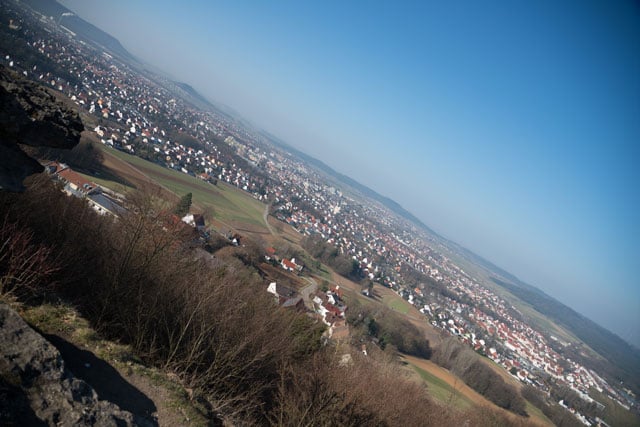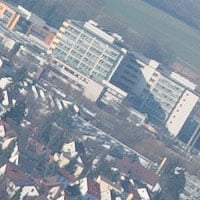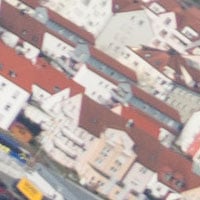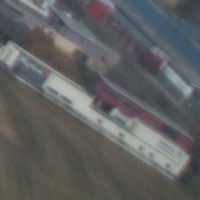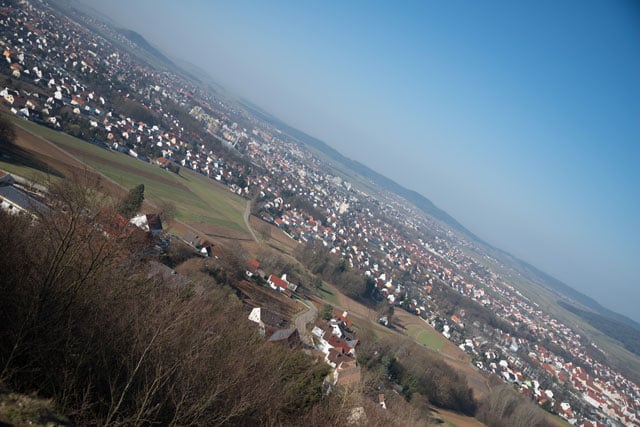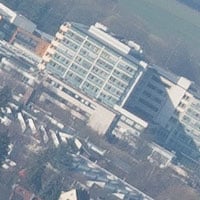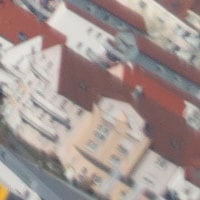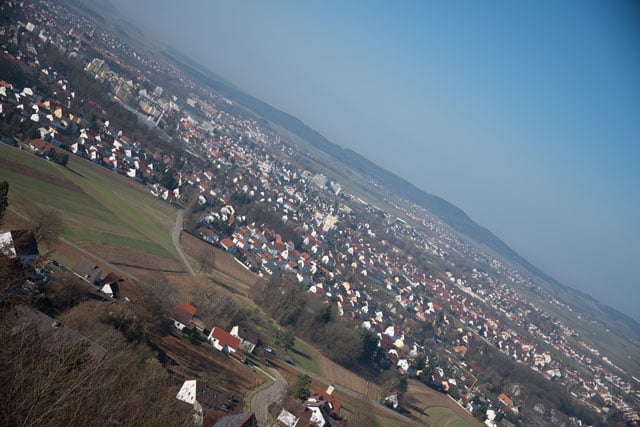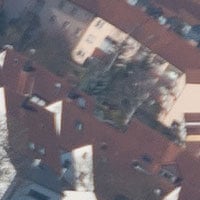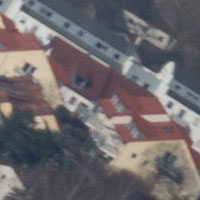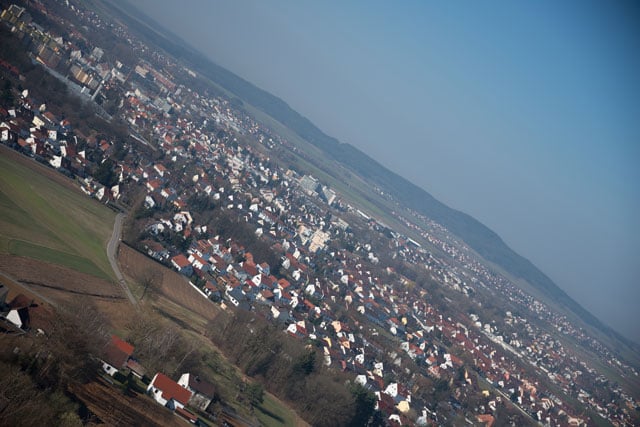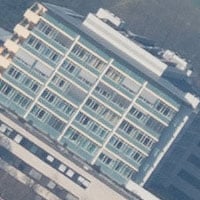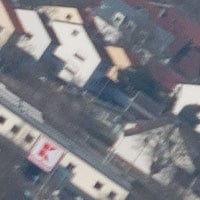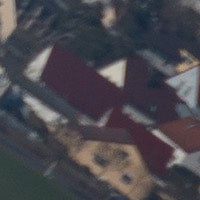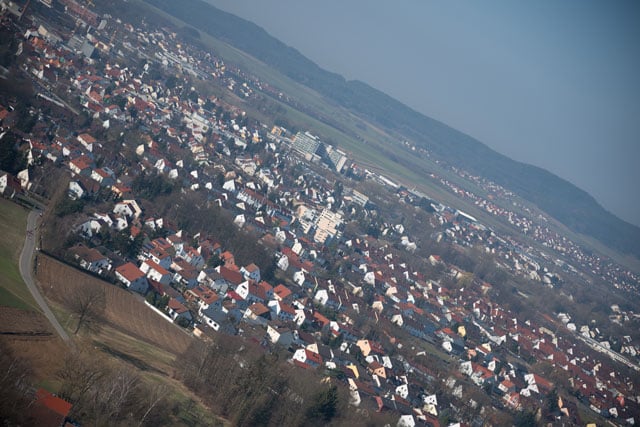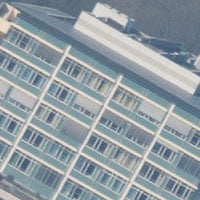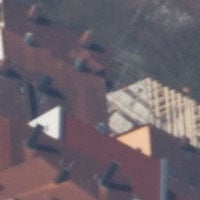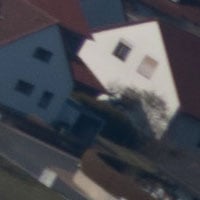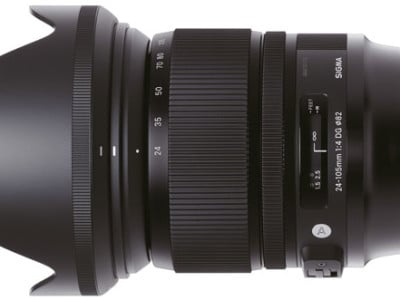Sigma 24-105mm f4 OS Art review
-
-
Written by Thomas
Quality
Sharpness and contrast
Let’s have a look at the theoretical performance (MTF-charts) at the wide and the long end first:
Sigma 24-105mm f/4.0 OS MTF | ||
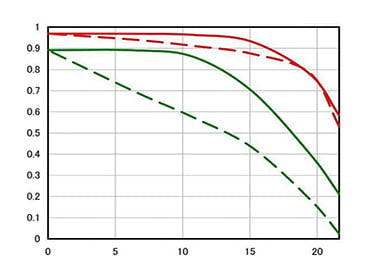 | 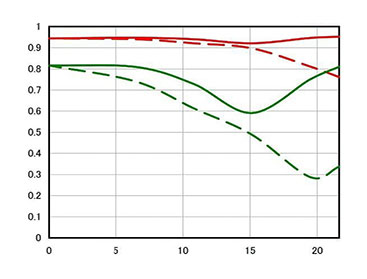 | |
| at 24mm, f4.0 | at 105mm, f4.0 | |
These charts show the lens-performance at the largest aperture f4.0. Higher values are better and the closer the dotted and the continuous lines of each color are together the less astigmatism (= resolution depends on the orientation of the test-pattern) the lens has. The x-axis displays the distance from the optical axis (=center of the sensor) in mm. I’ll show you the real-life performance at 4 mm (center), 13 mm (APS-C-corner), and 20 mm (FF-corner) on a D800.
From the charts the 24-105/4.0 should generally perform on a very high level regarding overall contrast (red lines) at both the short and the long end. But sharpness (green lines) at the short end displays some astigmatism and a steep dip towards the corners where also overall contrast suffers markedly. At the long end the decline in sharpness over the frame shows a dip at the APS-C-corner and then bounces back but with very high astigmatism. Let’s see how this theoretical performance translates into real life results in the sharpness test based on Siemens-stars.
What follows are near-center results (first column) followed by APS-C-corner results and FF-corner results on a D800. The D800 results from the APS-C-corner should be a very good approximation for performance on a 16MP APS-C sensor (like the D7000), because the pixel-pitch of both sensors are the same. But differences in the AA-filter and micro-lens-design of a D800 and a D7000 might yield different end-results.
Processing was done in Lightroom 5.3 from RAW at camera standard settings. Noise-reduction is set to 0, sharpening to 70/0.5/36/10, with no extra tone, color, or saturation-adjustment. White-balance was adjusted to a neutral white and I did some exposure compensation to make the brightness match. CA-removal is ON.
The following are all 100% crops!
Let’s have a look at the performance at 24mm first:
Sigma 24-105mm f/4.0 OS with Nikon D800 100% crop from center | Sigma 24-105mm f/4.0 OS with Nikon D800 100% crop from APS-C-corner | Sigma 24-105mm f/4.0 OS with Nikon D800 100% crop from FF-corner | ||
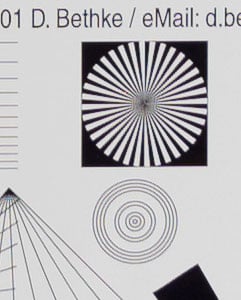 |  | 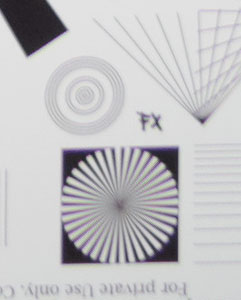 | ||
24mm, f4.0, 100 ISO | 24mm, f4.0, 100 ISO | 24mm, f4.0, 100 ISO | ||
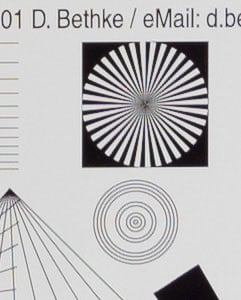 |  | 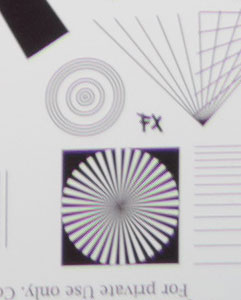 | ||
24mm, f5.6, 100 ISO | 24mm, f5.6, 100 ISO | 24mm, f5.6, 100 ISO | ||
 |  | 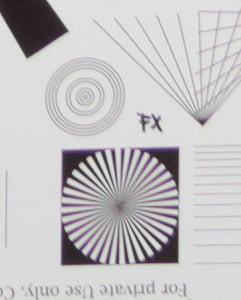 | ||
24mm, f8.0, 100 ISO | 24mm, f8.0, 100 ISO | 24mm, f8.0, 100 ISO | ||
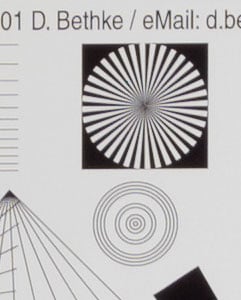 |  | 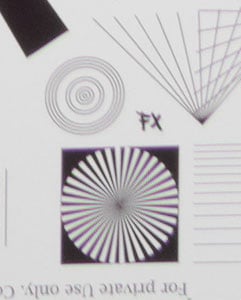 | ||
24mm, f11, 100 ISO | 24mm, f11, 100 ISO | 24mm, f11, 100 ISO |
These 100% crops directly from a 36MP D800 sensor show that this lens performs amazingly within the APS-C image-circle even wide open. But the FF-corner is clearly lagging in performance and also showed field curvature. Stopping down to f8 shows good improvements in the FF-corner and leads to a pretty satisfying performance across the full frame. Distortions are pretty high and show up even in the APS-C image-circle.
Performance at 35mm:
Sigma 24-105mm f/4.0 OS with Nikon D800 100% crop from center | Sigma 24-105mm f/4.0 OS with Nikon D800 100% crop from APS-C-corner | Sigma 24-105mm f/4.0 OS with Nikon D800 100% crop from FF-corner | ||
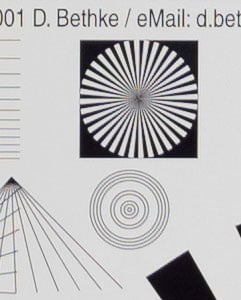 |  | 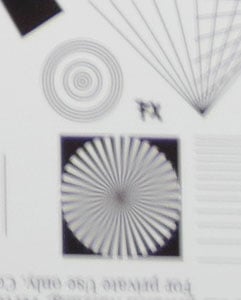 | ||
35mm, f4.0, 100 ISO | 35mm, f4.0, 100 ISO | 35mm, f4.0, 100 ISO | ||
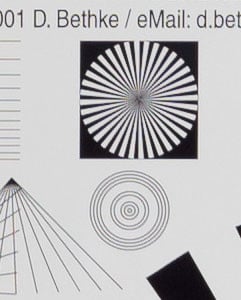 |  | 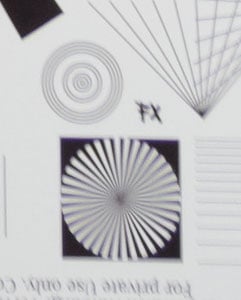 | ||
35mm, f5.6, 100 ISO | 35mm, f5.6, 100 ISO | 35mm, f5.6, 100 ISO | ||
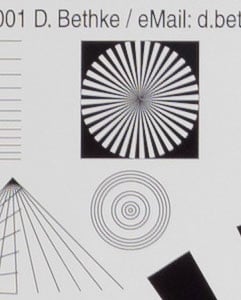 |  | 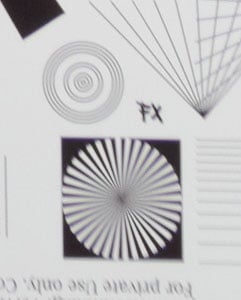 | ||
35mm, f8.0, 100 ISO | 35mm, f8.0, 100 ISO | 35mm, f8.0, 100 ISO | ||
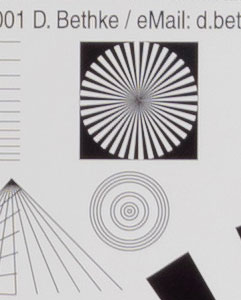 |  | 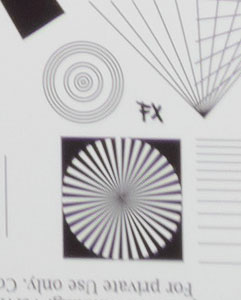 | ||
35mm, f11, 100 ISO | 35mm, f11, 100 ISO | 35mm, f11, 100 ISO |
At 35mm the FF-corner performance is even worse than at 24mm and you need to step down to f11 to get even performance across the frame. Distortions are now OK in the APS-C image circle but still obvious pin-cushion on a full-frame sensor.
Performance at 52mm:
Sigma 24-105mm f/4.0 OS with Nikon D800 100% crop from center | Sigma 24-105mm f/4.0 OS with Nikon D800 100% crop from APS-C-corner | Sigma 24-105mm f/4.0 OS with Nikon D800 100% crop from FF-corner | ||
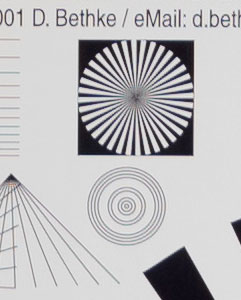 |  |  | ||
52mm, f4.0, 100 ISO | 52mm, f4.0, 100 ISO | 52mm, f4.0, 100 ISO | ||
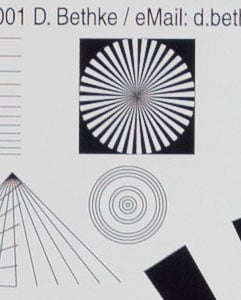 |  |  | ||
52mm, f5.6, 100 ISO | 52mm, f5.6, 100 ISO | 52mm, f5.6, 100 ISO | ||
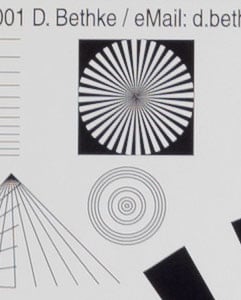 |  |  | ||
52mm, f8.0, 100 ISO | 52mm, f8.0, 100 ISO | 52mm, f8.0, 100 ISO | ||
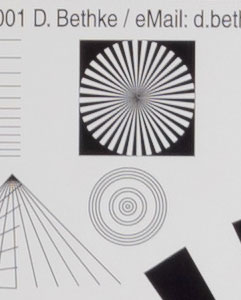 |  |  | ||
52mm, f11, 100 ISO | 52mm, f11, 100 ISO | 52mm, f11, 100 ISO |
52mm seems to be sort of a tipping point for this lens: performance in the center and the APS-C-corner are still very good, but the FF-corner finally sharpens up and delivers good to very good performance at f8. And field curvature is no longer field relevant: all crops in the above table for one aperture are from the same shot.
Let’s move on to 75mm:
Sigma 24-105mm f/4.0 OS with Nikon D800 100% crop from center | Sigma 24-105mm f/4.0 OS with Nikon D800 100% crop from APS-C-corner | Sigma 24-105mm f/4.0 OS with Nikon D800 100% crop from FF-corner | ||
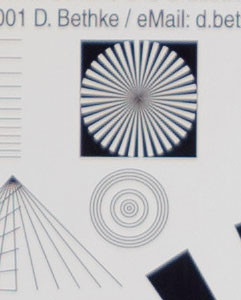 |  | 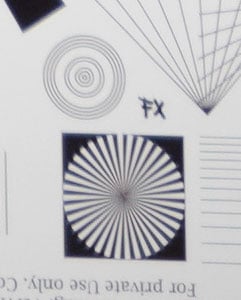 | ||
75mm, f4.0, 100 ISO | 75mm, f4.0, 100 ISO | 75mm, f4.0, 100 ISO | ||
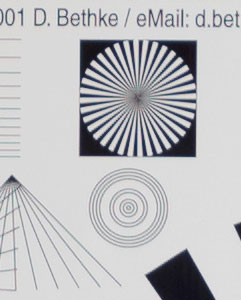 |  | 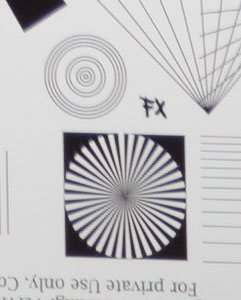 | ||
75mm, f5.6, 100 ISO | 75mm, f5.6, 100 ISO | 75mm, f5.6, 100 ISO | ||
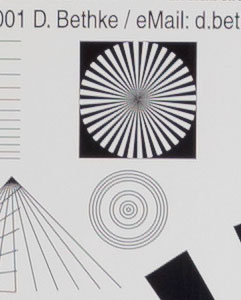 |  | 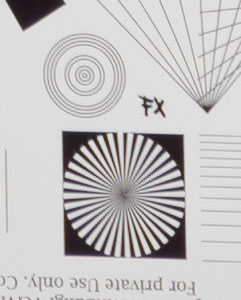 | ||
75mm, f8.0, 100 ISO | 75mm, f8.0, 100 ISO | 75mm, f8.0, 100 ISO | ||
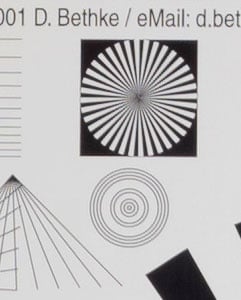 |  | 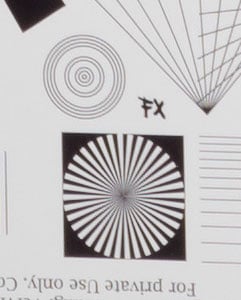 | ||
75mm, f11, 100 ISO | 75mm, f11, 100 ISO | 75mm, f11, 100 ISO |
While the FF-corner wide open is even better than at 52mm the center-performance shows some softening. But overall the performance across the full frame is good and stopping down to f5.6 or f8 gives you all the sharpness you need. Unfortunately field-curvature at the FF-corners is back.
Performance at 105mm:
Sigma 24-105mm f/4.0 OS with Nikon D800 100% crop from center | Sigma 24-105mm f/4.0 OS with Nikon D800 100% crop from APS-C-corner | Sigma 24-105mm f/4.0 OS with Nikon D800 100% crop from FF-corner | ||
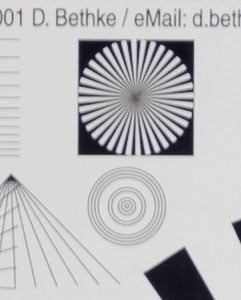 |  |  | ||
105mm, f4.0, 100 ISO | 105mm, f4.0, 100 ISO | 105mm, f4.0, 100 ISO | ||
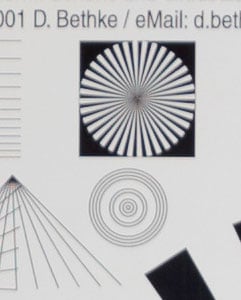 |  |  | ||
105mm, f5.6, 100 ISO | 105mm, f5.6, 100 ISO | 105mm, f5.6, 100 ISO | ||
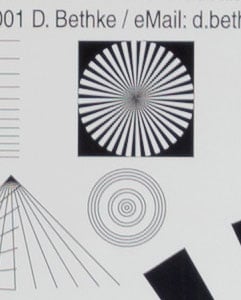 |  |  | ||
105mm, f8.0, 100 ISO | 105mm, f8.0, 100 ISO | 105mm, f8.0, 100 ISO | ||
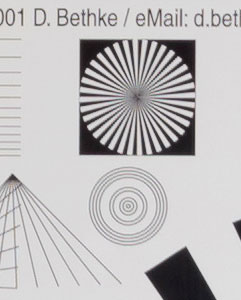 |  |  | ||
105mm, f11, 100 ISO | 105mm, f11, 100 ISO | 105mm, f11, 100 ISO |
At 105mm the lens becomes even softer than at 75mm and now sharpness in the APS-C-corners is suffering quite a bit although the overall contrast is still good. Field-curvature is negligible: the above crops for one aperture are from the same shot.
Performance at large distances
The Siemens-star test-targets are shot at a distance of 40x focal length (i.e. at 2m for 50mm f.l.). But performance of lenses also depends on the shooting distance. Therefore I do another series of test-shots of a landscape dubbed the “Unremarkables” where you can measure distances in km, not meter. In the morning, when the weather is clear and the sun is up I use this scene to show you how the lenses perform when almost everything is at infinity. I set White Balance to a standard daylight value to make them comparable across lenses shot at the same day and also try to make exposure comparable. There’s no tinkering with vignette-control so you see it here as it is produced by the lens. Focus was acquired at the largest aperture in contrast-based AF and not changed for other apertures.
You can click on each image to access the large original. Please respect our copyright and only use those images for personal use.
The main image shows the complete scene at maximum aperture to give you an impression of the angle of view and to judge vignetting. This is followed by one row of 100% crops from the middle, the (lower right) APS-C-corner and the (lower right) FF-border. Let’s start with 24mm focal length where the lens shows very good center sharpness but lagging APS-C- and FF-corners:
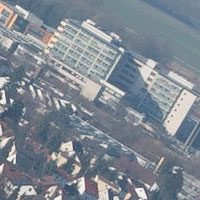 | 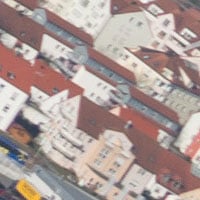 |  | ||
24mm, f5.6, center | 24mm, f5.6, APS-C-corner | 24mm, f5.6, FF-corner | ||
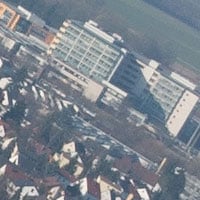 | 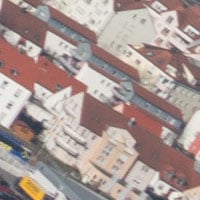 |  | ||
24mm, f8.0, center | 24mm, f8.0, APS-C-corner | 24mm, f8.0, FF-corner | ||
At 35mm vignetting is much lower and the APS-C-corner is quite good. But the full-frame corner is still a bit mushy:
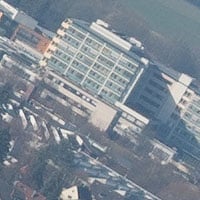 | 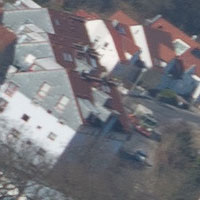 | 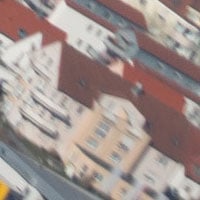 | ||
35mm, f5.6, center | 35mm, f5.6, APS-C-corner | 35mm, f5.6, FF-corner | ||
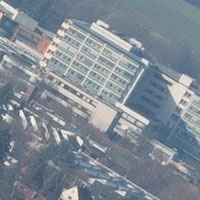 | 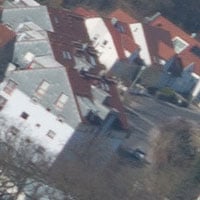 | 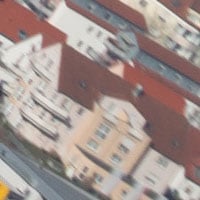 | ||
35mm, f8.0, center | 35mm, f8.0, APS-C-corner | 35mm, f8.0, FF-corner | ||
At 52mm performance across the full frame is pretty good with a still very sharp center. Stop down to f8 and you get a very homogeneous performance even in to the corners of the full frame:
 | 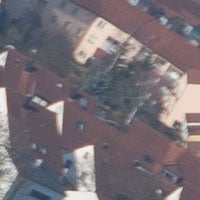 |  | ||
52mm, f5.6, center | 52mm, f5.6, APS-C-corner | 52mm, f5.6, FF-corner | ||
 | 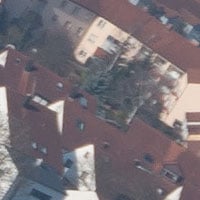 |  | ||
52mm, f8.0, center | 52mm, f8.0, APS-C-corner | 52mm, f8.0, FF-corner | ||
At 75mm vignetting is coming back quite unexpectedly. The lens softens up a bit and the FF-corners never get up to satisfying performance when stopping down:
 | 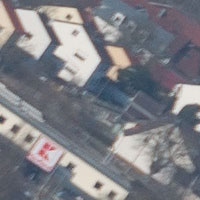 | 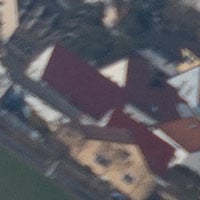 | ||
75mm, f5.6, center | 75mm, f5.6, APS-C-corner | 75mm, f5.6, FF-corner | ||
 | 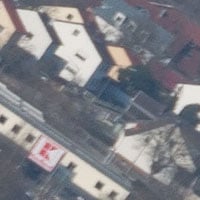 | 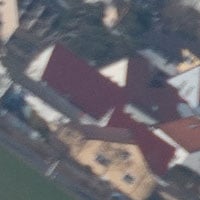 | ||
75mm, f8.0, center | 75mm, f8.0, APS-C-corner | 75mm, f8.0, FF-corner | ||
At 105mm you need to stop down to f5.6 to get good APS-C corners while the FF-corners show a good performance from the start, albeit with quite some vignetting:
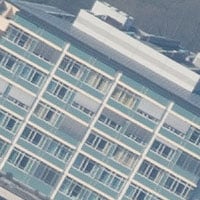 | 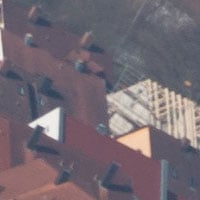 | 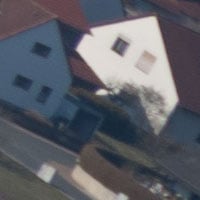 | ||
105mm, f5.6, center | 105mm, f5.6, APS-C-corner | 105mm, f5.6, FF-corner | ||
 | 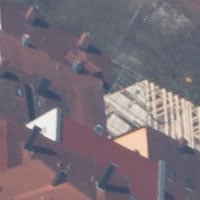 | 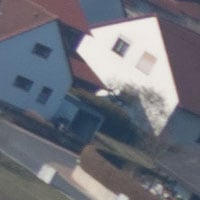 | ||
105mm, f8.0, center | 105mm, f8.0, APS-C-corner | 105mm, f8.0, FF-corner | ||
Looking at the shots above you can notice some obvious light fall-off in the far corners. To make this effect easier to observe at different focal lengths I’ve arranged the following test-shots at 24mm, 35mm, 75mm, and 105mm side-by-side:
Sigma 24-105mm f/4.0 OS Light Fall-off | ||
 |  | |
| at 24mm, f4.0 | at 35mm, f4.0 | |
 |  | |
| at 75mm, f4.0 | at 105mm, f4.0 | |
The results show clear fall-off at 24mm that is in the range of what has to be expected (about 2 stops). At 35mm (and 52mm) fall-off is nicely reduced. But from 75mm onwards till 105mm fall-off is back to the levels at 24mm which is quite unexpected and somewhat disappointing.
Regarding resolution and contrast the lens shows a very good performance in the center and also in the APS-C image-circle except at 105mm. Performance in the full-frame corners is weak but still usable at focal lengths below 50 mm. Zooming in to the longer end increases performance in the FF-corner but field-curvature prevents some of the performance to show up at landscape shots. Stopping down to f8 mostly gets you quite respectable performance across the full frame. On an APS-C body performance is pretty good even wide open up until 105mm focal length where you need to stop down to f5.6 to improve the APS-C corners.
Flare/ghosting
Shooting normal or wide-angle lenses always runs the risk of catching a strong light-source like the sun shining directly into the lens. This could produce strange colorful ghosts-images or reduce contrast considerably through flare and glare.
The appearance of flare and ghosting depends on factors like the aperture and the angle of the light hitting the lens. So to judge the proclivity of a lens for these artifacts I went through a series of well calculated shots against a strong light source to provoke glare and ghosting.
| Flare/Glare: shot with Sigma 24-105/4.0 OS at 35mm f4 on a D800 |
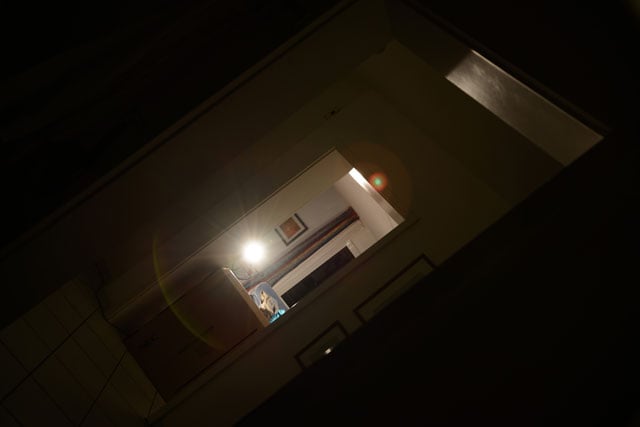 |
| 35mm, f4.0, 100 ISO |
The image shows one of the worst ghosts that I could produce with this lens. Of almost 100 shots in this test 8 others showed similarly obvious effects and 39 others produced some weaker ghosts or flares or some streaking effects which shows that the complex design of this lens is quite prone to flare/ghosting. Fortunately veiling glare is not often an issue and the blacks are mostly black.
Now let’s check out some Sigma 24-105mm f4 OS sample images, or if you’ve seen enough, head over to my verdict.
